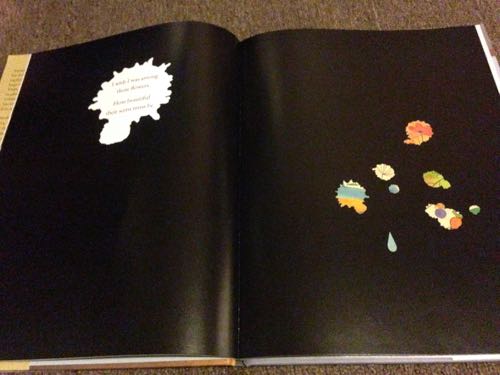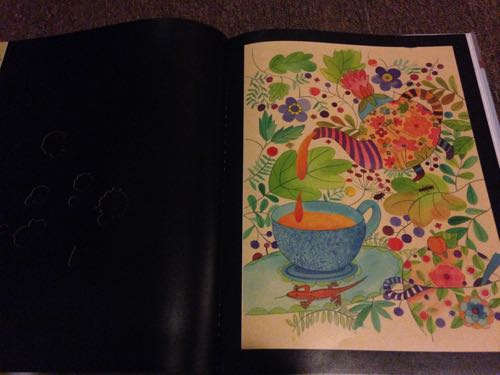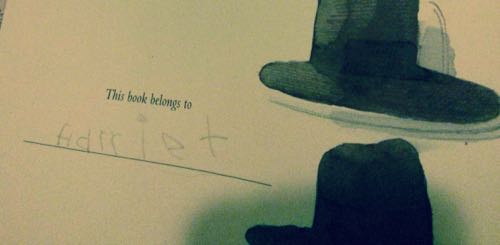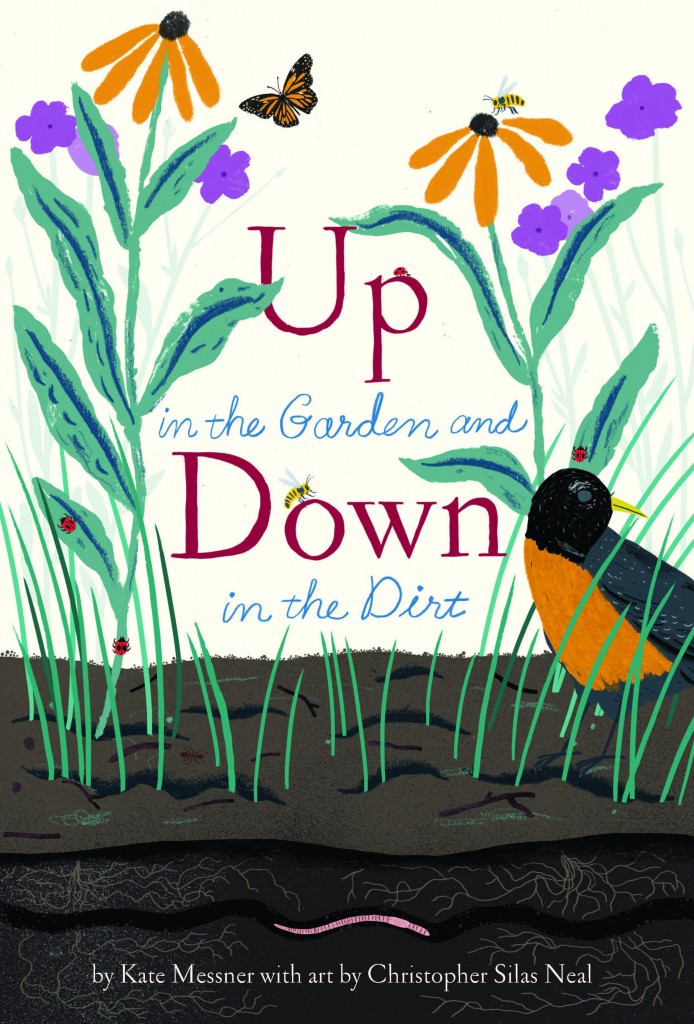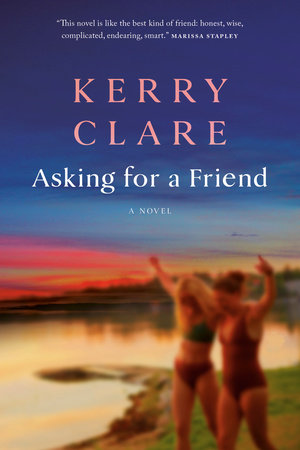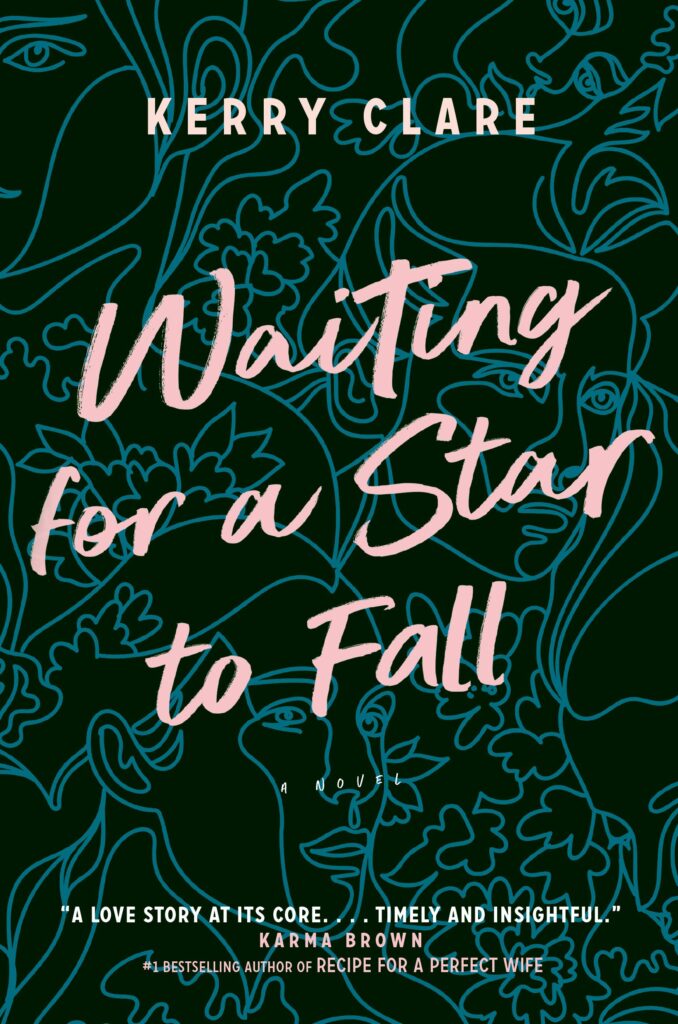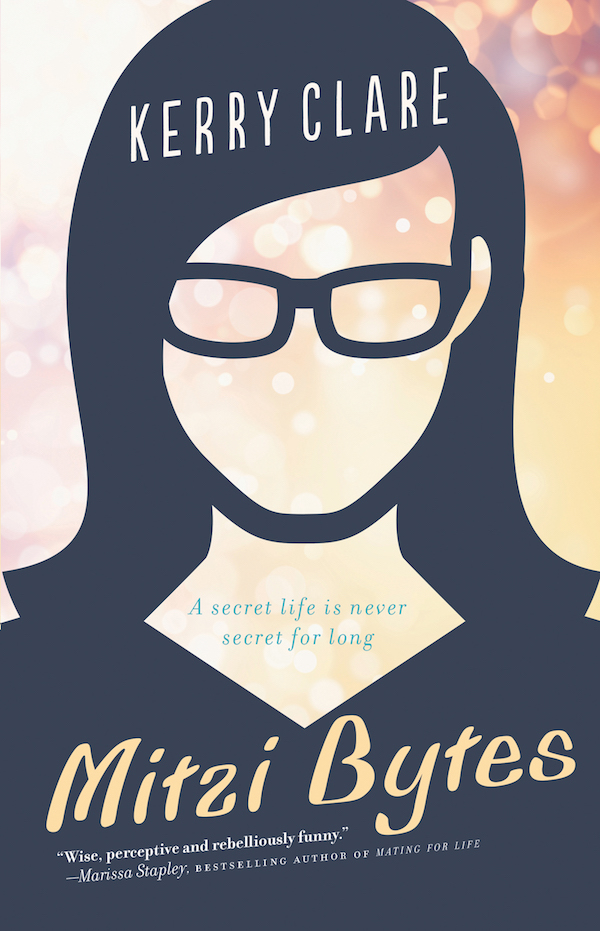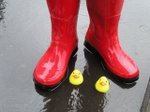January 22, 2016
The Moon was the Best, by Charlotte Zolotow and Tana Hoban
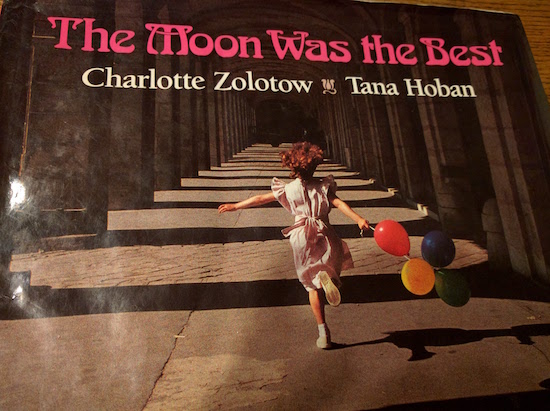
I never knew that Charlotte Zolotow (literary legend, famous editor and author of books including William’s Doll, The Hating Book, and so so many others) worked with Tana Hoban, who was Russell’s sister and a photographer who produced beautiful children’s books throughout the 1970s and ’80s. But Harriet brought home this beautiful book from school yesterday, not a library book, a hardcover with its dust jacket intact. “What’s this?” I asked her, because she usually only brings home books about Scooby Doo. And she informed me that her teacher had loaned it to her. “I told her about the Barbados trip,” she said. “And she said I should read this.”
It’s a story about a little girl whose mother and father take a trip to Paris, and the little girl asks her mother to remember all the special things to tell her about. What the mother remembers isn’t necessarily what one would expect from a trip to Paris, but instead the memories are perfectly attuned to a child’s-eye view, gorgeously complemented by Hoban’s photographs in vivid colour.
You’ve probably heard me say before that Harriet has the most wonderful teacher, and the thing about such a statement is that it’s always been true. “The Barbados trip” is an event that looms large in Harriet’s future, our first time going away without her for a week, and while she’ll be in good care and is looking forward to many parts of having her adventures while we’re gone, she’s still nervous. Which her teacher was able to intuit, and treat with a literary salve—and what an exquisite one. I read the book twice, and its ending brought me to tears every time.
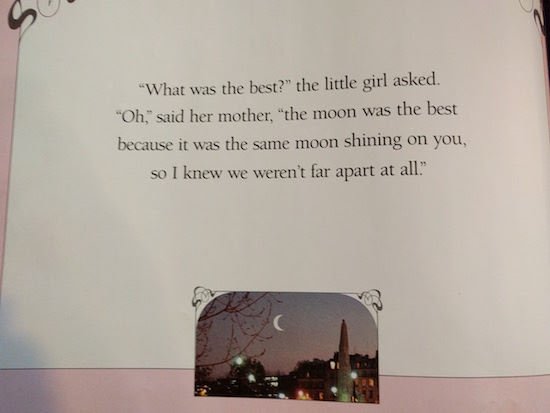
January 15, 2016
Way Back Then, by Neil Christopher and Germaine Anarktauyok

Our whole family really likes Way Back Then, by Neil Christopher and illustrated by Germaine Anarktauyok, a cozy northern story that takes place at night in a warm iglu as two children ask their father, Kudlu, to tell them stories of long ago. And not of so recently long ago either, stories of Kudlu’s boyhood, but instead tales of those times “when the mountains were giants and there was lots of magic in the world.”
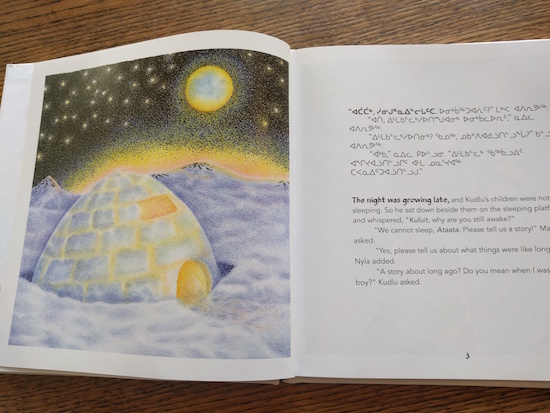
And so Kudlu proceeds to sketch out the legends he knows about why we have night and day, about how animals used to be able to remove their fur and feather like we take off our clothes, and also about how the caribou arrived when the land spirit cut a hole in the earth—but then the whole was accidentally left open and many caribou escaped and that’s why the North is filled with caribou.
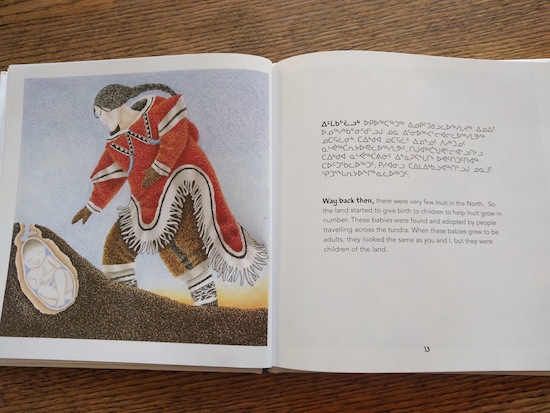
Illustrator Arnaktauyok is well-known for her paintings and prints that incorporate elements of traditional Inuit narratives. In the image above, the land is giving birth to babies in order for the Inuit to grow in number. “These babies were found and adopted by people travelling across the tundra. When these babies grew up to be adults, they looked the same as you and I, but they were children of the land.”
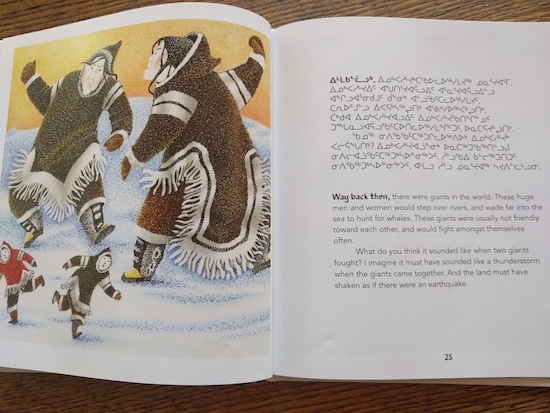
We are avid fans of fairy tales, and enthusiastically making our way through the Narnia series at the moment, which meant that these stories of tiny hunters and giants, talking animals and magic did not feel so otherworldly. The format of the stories too is engaging, the father telling these in the cozy night, children tucked up in their bed—perfect for when mine are just about to be so, even if we don’t live in an iglu ourselves. I also like the twist at the end—that Kudlu is relieved when the children finally go to sleep because he doesn’t know the endings of most of his stories, because he was always asleep himself by the time his grandparents got to those parts.
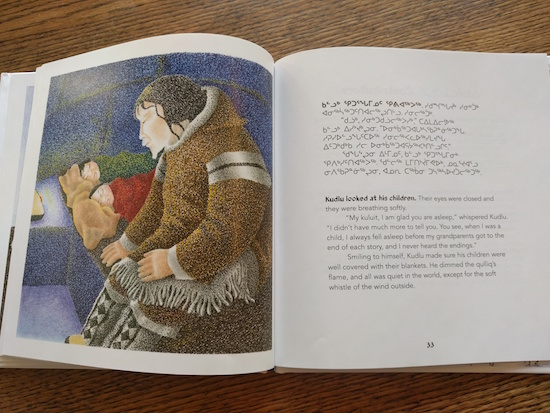
Inhabit Media is the only Inuit-owned publishing company in Canada’s north and they’ve become well established as makers of beautiful award-winning books that also serve to preserve Inuit culture. Written in both English and Inuktitut, the book also includes an Inuktitut pronunciation guide for terms that appear in the former—ataata (“a-ta-ta”) for Father; kuluit (“koo-loo-eet”), a term of endearment meaning “dear ones.”
And check out the caribou endpapers—this is a great book from start to finish.

January 12, 2016
The Babysitters Club, or What Comes Down Through the Ages

Whenever I start to worry too much about shaping my child’s cultural consciousness, I remind myself that at the age of ten I read The Babysitters Club series exclusively and that I once cried at receiving Swallows and Amazons for my birthday instead of Mallory and the Trouble With Twins. (Remembering this is why I try to read classic children’s books with my daughter, rather than expecting her to gravitate to them on her own.) I used to tick off BSC books in my Scholastic Book Order like they were going out of style, and refused to believe that they ever would go out of style. I remember a conversation with my mom about how it was a shame the books weren’t in hardcover because they fell apart in paperback and how was I ever going to pass them onto my own children the same way my mom had given me her Trixie Beldens and Cherry Ames. (I think had different ideas about hoarding then.) I recall my mom was skeptical about the books’ everlastingness.
It’s odd to realize that I was kind of right, however. The first book in Ann M. Martin’s iconic series (iconic, that is, if you were a certain kind of age in a certain type of place), Kristy’s Great Idea, was rereleased in 2006 in graphic novel form by the award-winning Raina Telgemeier, along with three other titles. Although it stayed peripheral to my experience until our friend Erin bought Harriet her own copy of Kristy’s Great Idea, and Harriet was hooked. She loved it. You can’t imagine how strange it is for your daughter to be telling you about how Kristy Thomas’s two brothers are called Sam and Charlie. That this kind of knowledge is the sort of thing that gets comes down through the ages. Who knew that The Babysitters Club would actually be a series of books that got passed on to my children?
 But it’s not really so surprising, when you think about it. There’s always been something generative about the series. The characters themselves are types, but also specific down to their accessories (or lack of them—not everyone can pull off dangly parrot earrings), and that the books were told from all their different points of view enabled readers to try on these roles for size. This is just a starting point for how readers have taken ownership of these familiar characters and their favourite books. These are characters who live beyond the page, as attested to by the popularity of Babysitters Club fan fiction communities online. The books have generated blogs including those revisiting the entire series and another exploring its characters’ tastes in fashion.The series are also Buzzfeed bait: note The Definitive Ranking of All 131 Babysitters Club Covers Outfits. Artist Kate Gavino designed a series of book covers imagining the series had it taken place in 2014. I recall a few years back someone was making notebooks out of recycled BSC book covers. Not to mention that the series was self-generating—so many spin-off series, so many…recycled notebooks. Plus board games, movies, dolls, etc. And the imitation babysitting clubs the books must have inspired as well—though I do wonder if any of these were successful. From an entrepreneurial point of view, it was not the greatest business model. As a parent it would be most inconvenient to only be able to schedule babysitters twice a week and if Kristy Thomas had been a proper capitalist, wouldn’t she have kept all the babysitting jobs for herself?
But it’s not really so surprising, when you think about it. There’s always been something generative about the series. The characters themselves are types, but also specific down to their accessories (or lack of them—not everyone can pull off dangly parrot earrings), and that the books were told from all their different points of view enabled readers to try on these roles for size. This is just a starting point for how readers have taken ownership of these familiar characters and their favourite books. These are characters who live beyond the page, as attested to by the popularity of Babysitters Club fan fiction communities online. The books have generated blogs including those revisiting the entire series and another exploring its characters’ tastes in fashion.The series are also Buzzfeed bait: note The Definitive Ranking of All 131 Babysitters Club Covers Outfits. Artist Kate Gavino designed a series of book covers imagining the series had it taken place in 2014. I recall a few years back someone was making notebooks out of recycled BSC book covers. Not to mention that the series was self-generating—so many spin-off series, so many…recycled notebooks. Plus board games, movies, dolls, etc. And the imitation babysitting clubs the books must have inspired as well—though I do wonder if any of these were successful. From an entrepreneurial point of view, it was not the greatest business model. As a parent it would be most inconvenient to only be able to schedule babysitters twice a week and if Kristy Thomas had been a proper capitalist, wouldn’t she have kept all the babysitting jobs for herself?
Anyway, it makes sense, with Martin’s wholly realized fictional world, that Telgemeier would have so much to work with in these stories, and that the graphic novels themselves would be so successful. The books are empowering and feminist (these girls may have worked as caregivers, but caregiving was their business; strong feminist role models, paging Kristy Thomas’s mother, anyone? [before she married a millionaire], and how about their author who lived seemingly single in New York City and hated to cook?), and, as I’ve made clear, most inspiring.
Perhaps we should be collecting them in hardback after all.
January 8, 2016
All Year Round, by Emilie Leduc

The new year is a perfect occasion to pick up All Year Round, written and illustrated by Emilie Leduc and translated from French by Shelley Tanaka. While it’s a truth universally known that there is no months-of-the-year book as perfect as Maurice Sendak’s Chicken Soup With Rice, it’s nice to also have another book that actually makes sense. Even if it fails to contain the line, “Whoopy once! Whoopy twice!”—my one criticism of this book. And most books, actually.
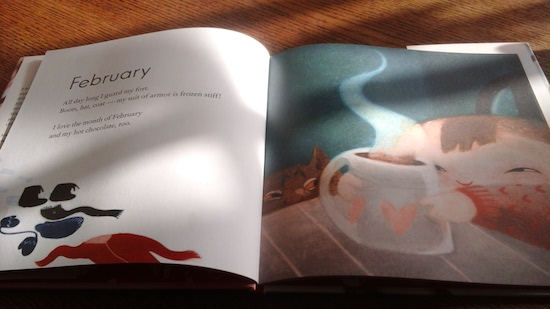
Each month includes a prose poem and beautiful celebratory illustration from a child’s point of view. Plus, a glimpse of a cat called Clementine, much to any young reader’s delight.

Every month and every season contains something wondrous, and that each month hinges on a non-secular occasion offers this book a perfect universality.
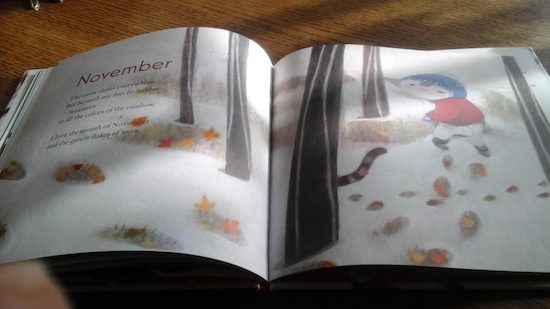
This book is a story about the rhythms of our world and of our lives—just as good as riding a crocodile down the chicken soupy Nile!
December 21, 2015
The Adventures of Miss Petitfour, by Anne Michaels, illustrated by Emma Block

While The Adventures of Miss Petitfour is indeed world-renowned writer Anne Michaels’ first book for children, it might be as accurate to state that it was written exactly for me. Bizarrely so. Right down to the bunting and teapot and caked goods on the endpapers. There is a jumble sale in the second chapter, for heaven’s sake, and every adventures ends with a tea party. There is an entire chapter about cheddar cheese. This was the other book that I bought last week, and we spent every night reading it together, being positively delighted. (Please do read this post by Lisa Martin, inspired by Doris Lessing, on the necessity of the capacity for delight as a precondition for resilience.) If a Barbara Pym novel married Mary Poppins, this book would be their progeny.
“Some adventures are so small, you hardly know they’ve happened… Other adventures are big and last so long, you might forget they are adventures at all—like growing up. And some adventures are just the right size—fitting into a single, magical day. And these are the sorts of adventures Miss Petitfour had.”
Miss Petitfour travels by table cloth, which is a terrific twist on the magic carpet, and much more scientifically plausible. She holds the table cloth just so and lets it fill with wind, and then up she goes (after she has taken “a measure of the meteorological circumstances, that is to say, the weather”), her sixteen cats trailing along for the journey. And their adventures are rich with digressions, narrative and actual, as well as bookishness, confetti, misdirections and festoonery. Charged with whimsy and fun, there is an underlying intelligence to these stories, which are so very much about words:
“People often say that children have no use for long words, but frankly, Mrs. Collarwaller [the bookseller] found this never to be the case. In her vast experience, children loved books that contained words such as propitious, perambulator and gesticulate, especially if they all ended up in the same sentence. The kind of word your tongue could get tangled up and lost in.”
In Miss Petitfour’s local bookshop, there are two sections: one side for adventure books and the other for books in which nothing happens (“the hum and the ho-hum”). In the most perfect way (in addition to the story about cheddar, there’s one about a runaway postage stamp, for example), this books manages to be both.
December 16, 2015
When Santa Was a Baby
The only thing I like better than a bookshop in general is a bookshop in December, when the lines at the till are long, the floor is buzzing, and everybody’s walking around with arms full of books. Lying in bed these past few weeks as December began to eke out, day by day, it was holiday bookshops I was missing. I used to do all my Christmas shopping at Book City around the corner, and feel ridiculously smug for buying so locally that the distance could be measured out in metres, and while I miss Book City all the time, I do so particularly at this time of year—this will be our second Christmas without it. So yes, I’ve been feeling a dearth of bookshops, so when I went to the doctor on Monday to have my lungs examined (and receive the all-clear), I made a point of skipping across the road to the nearby Indigo, to purchase gift cards as end-of-year presents for Iris’s teachers, of course, but also to do some book buying.
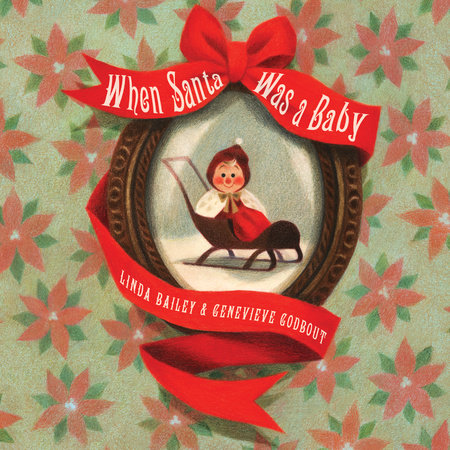
I bought two books, both of them “for my children” (ha ha) and I’ll be writing about both titles, the first one being the wonderful When Santa Was a Baby, by Linda Bailey, illustrated by Genevieve Godbout. Cheerfully illustrated with a delightful vintage vibe, it’s the story of a little baby who was unusual from the start:
“Look at those dimples,” said his dad. “How merry!”
“And his dear little nose,” said his mom. “Like a cherry!”
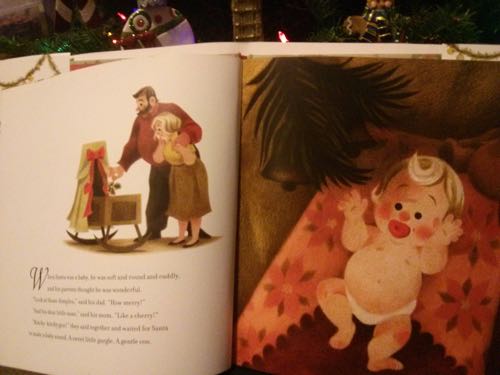
Instead of coo-ing, Baby Santa booms an enormous, “Ho, Ho, Ho!” He refuses to wear any colour but red.

And he has a curious preoccupation with the chimney.
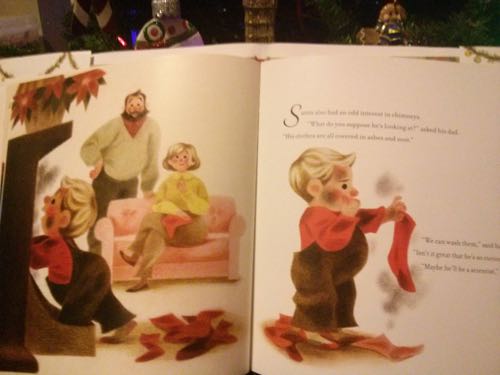
Santa’s parents never waver in their pride for their unusual son, even when he insists on standing naked in front of the refrigerator for a little chill to escape the summer heat, or when he gathers all his birthday presents into a big sack and goes about distributing them to neighbourhood children. They think their boy is pretty terrific, and so creative, and curious, and they’re willing to do whatever they can to make him happy.
Children will find the idea of a Baby Santa quite hilarious, with the bare bums and all, and it’s wonderfully novel to recast such a familiar cultural figure as a child. But for parents, it’s the unconditional, ever-elastic, infinite love of Santa’s mom and dad in the story that will so resonate—and quite possible inspire.
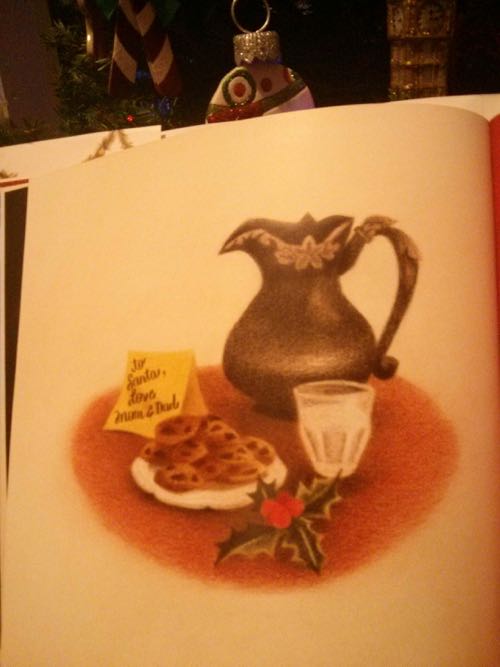
November 19, 2015
The Story of Snowflake and Inkdrop
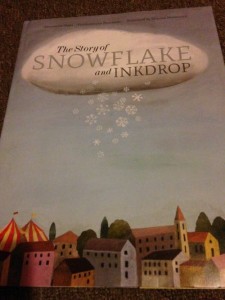 The Story of Snowflake and Inkdrop is written by Pierdomenico Baccalario and Alessandro Gatti, illustrated by Simona Mulazzani, and translated from Italian by Brenda Porster. It’s a gorgeously illustrated picture book about yearning, desire, and storytelling, with beautiful intricate die cuts that make it a book that might be better be kept up on a hight shelf, and perhaps best suited for grown-up picture book lovers. Although my children, with their grubby little fingers, like the book as much as I do, and are as adept at getting lost in the illustrations, and perhaps even better at picking out its perfect details, at noticing things. And there is a lot to notice here, in a book about tiny particles and what it means to be part of something larger than oneself. And also about what it means to see the world and want to be a part of it, and the amazing, serendipitous way that this (that love!?) can happen.
The Story of Snowflake and Inkdrop is written by Pierdomenico Baccalario and Alessandro Gatti, illustrated by Simona Mulazzani, and translated from Italian by Brenda Porster. It’s a gorgeously illustrated picture book about yearning, desire, and storytelling, with beautiful intricate die cuts that make it a book that might be better be kept up on a hight shelf, and perhaps best suited for grown-up picture book lovers. Although my children, with their grubby little fingers, like the book as much as I do, and are as adept at getting lost in the illustrations, and perhaps even better at picking out its perfect details, at noticing things. And there is a lot to notice here, in a book about tiny particles and what it means to be part of something larger than oneself. And also about what it means to see the world and want to be a part of it, and the amazing, serendipitous way that this (that love!?) can happen.
At first, this is the story of some wind and a snowflake drifting over the rooftops of a European town. The snowflake, we’re told, has been travelling for a long time. He feels, however, that he’s finally on the cusp of arriving somewhere, and the world below is glimpsed through the snowflake’s crystals, revealed altogether when the page is turned: we see a city street in one image, a circus in another, and then children playing in a park as the snow begins to accumulate.
In none of these scenes does the snowflake fall, however, and he begins to despair that he ever will… When he sees a tiny ink drop flying resolutely toward him, and the snowflake is overwhelmed by the desire to hug it tight. BUT WAIT!
Turning the book around and starting from the other side, we encounter that storm from an altogether new perspective. A single drop in a bottle of ink watching the wind rattling the world outside.
Although the Inkdrop has her own concerns—for days, she’s been waiting for her artist to finally carry her to one of his paintings. Her longing is intensified as a gust of wind from the window blows the paintings around the studio, so that they “flew up, dancing in front of Inkdrop like so many dreams.”
She sees each painting, and wishes deeply to be a part of the scene.
And yes, it is a picture of a teapot. Naturally, we are delighted. We see also a portrait, a bucolic scene. (Clearly this is an artist with a diverse set of approaches!)
When the wind blows so strongly again, unleashing a chain reaction that sends the ink bottle tilting, Inkdrop herself flying out of the window. And then we’re back at the moment we’ve seen before, the ink drop and the snowflake heading for each other in a dazzling cataclysm.
And both books end in the same place, the two parts coming together to have their stories blend, this final image testament to the beauty of contrast.
Truthfully, I am not entirely ensure what the endings means, the snowflake and the inkdrop landing in an embrace “that lasted forever.” When one considers physics, it does not seem entirely plausible, and there is the matter of the inkdrop in the jar—what then of the rest of the ink? Where did one drop end and another begin? And why is the artist so scattered in his style—is he perhaps a forger, I wonder? (Although he looks quite innocent and rosy-cheeked when we spy him out buying a baguette.) One suspects, however, that physics aren’t quite the object of the book, except perhaps those involves in the die-cutting process. For The Story of Snowflake and the Inkdrop is to be looked at and admired and even roughed up a bit by those aforementioned grubby hands, and perhaps this one is the single way that the book should be torn apart at all.
November 13, 2015
The TD Grade One Giveaway!
On Monday, Harriet pulled Mr. Zinger’s Hat, the 2015 TD Grade One Giveaway, out of her backpack. And I was confused. “How did you get that?” I asked her. A few seconds of discombobulation before the obvious point dawned on me: that Harriet is in grade one, receiving the book with other six-year-olds across the country. Literally, I’d been waiting years for this.
They didn’t have the TD Grade One Giveaway when I was grade one, but I learned about the program first when I started working for 49thShelf.com, and was invited to an event promoting the campaign. This was in 2011, when the giveaway pick was Gifts, by Jo-Ellen Bogart and Barbara Reid. (I wrote about it here.) And in the years since, I’ve been kept in the loop, receiving copies of the books at the TD Children’s Literature Awards (which is the one gala per year I get invited to…)
In a house like ours, the arrival of a brand new book is not such a momentous occasion…or so I thought. But Harriet bringing home a book that was hers alone, so much hers that she’d already written her name in the space allotted on the inside cover, turned out to be really, really exciting. And I can’t imagine what it might mean to a kid who doesn’t have access to all the books that Harriet does, to have a book that’s all their own. Although I can imagine what it’s like for any family to have the pleasure of a brand new book to read together—it’s one of the best things ever. I also appreciate how notes at the back of the book include a listing of every single award-winning Canadian book from the previous year, which is whole words to explore the next time that family visits the library, and another excellent example of one book leading to another.
Yesterday it was reported in the Toronto Star that students in York Region won’t be receiving Mr. Zinger’s Hat due to rules against corporate sponsorship in schools. And while such a stance is admirable, and while I do wonder why the banks have so much money that nothing seems to happen without them, I know that TD has a long, established and admirable record of supporting early literacy. In addition to the Grade One Giveaway, they sponsor initiatives including summer reading programs at libraries throughout the country, TD Children’s Book Week (which sends authors to school across Canada every spring), and the nation’s biggest children’s lit prize. (Also, the Marilyn Baillie Picture Book Prize is named for Marilyn Baillie, Canadian children’s author and wife of former TD Chairman A. Charles Baillie—just another connection).
Upon reflection, it occurs to me that the preceding paragraph is the most corporate shilly collection of sentences I’ve ever written. Do I need to point out then that I’ve not received compensation for it from TD or anyone (though if they’d like to send me funds, I’d be willing to entertain all possibilities)? But I suppose it’s just I really believe in a program like this, one that makes great books available to everyone. And I love the idea of kids across the country united by the power of a story.
November 6, 2015
Elephant Journey The True Story of Three Zoo Elephants and their Rescue from Captivity, by Rob Laidlaw and Brian Deines
Elephant Journey: The True Story of Three Zoo Elephants and their Rescue from Captivity, by Rob Laidlaw and Brian Deines, is a fantastic non-fiction book that uses the power of narrative (and the award-winning Deines’ gorgeous illustrations) to bring complex issues of animal protection to life. It’s the story of the two elephants from the Toronto Zoo who were brought there from African in the 1970s, when our understanding of the culture and purpose of zoos was very different, and one more who was born in captivity, all of whom failed to thrive in a northern climate so unsuited to their species. (For more about the zoo and elephants, read Nicholas Hune-Brown’s 2010 article, “What the Elephants Know”.)
After much political wrangling (which Laidlaw mercifully omits from his version of the tale), it was decided that the three elephants were to be moved to an animal sanctuary in California. And that amazing journey is the focus of this story, how the elephants were made accustomed to their crates, which where then picked up by giant cranes and loaded onto flatbed trailers towed by trucks. (And I love the illustration of the truck, being accompanied by a police car, headlights, streetlights, and flashing lights in the night; Deines is good at drawing trucks, one of which was a focus of Number 21, by Nancy Hundal, another book of his that we’ve enjoyed.)
The elephants make their way past surprised border guards, through the American midwest, and up and down the mountains in Utah and Nevada, where the brakes on one truck begin to overheat, but all is well after the driver douses them with water. And then the elephants arrive, become comfortable enough to leave their crates, and begin to acquaint themselves with their new neighbours, new surroundings and new lives.
Four pages of photographs, fact boxes and additional text add context and background to Laidlaw’s story, though the book stands well enough on its own without it. It’s a harrowing story with a most hopeful ending, and will make a definite impression on readers of all ages.
November 4, 2015
Butterflies
As much as I cherish the feeling of my children’s hands in mine, I do so love watching them race ahead of me down the sidewalk. I love their freedom, speed, their unfettered exuberance, the possibility that their feet might indeed sprout wings. Their sense of entitlement that this world, this city, is open to them. And I like trusting too that they’ll know to stop at the corner. Every time.
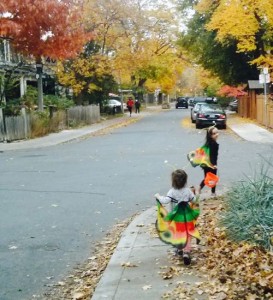 But there was something remarkable about watching them fly down the sidewalk on Saturday, Halloween, butterfly wings billowing out behind them, colourful spans. The most low-maintenence costumes in our family history of Halloweens—we had one pair of wings already, and borrowed the other from our cousin. We made antennae out of pipe-cleaners, styrofoam balls, and headbands. Ordinary clothes beneath. I was terrified that all this would backfire the night before and Harriet would decide that what she really wanted to be was a fiery glittery invisible incandescent humdingermabobber. Or Elsa. But she didn’t. And whatever Harriet wanted to be, Iris wanted to be too.
But there was something remarkable about watching them fly down the sidewalk on Saturday, Halloween, butterfly wings billowing out behind them, colourful spans. The most low-maintenence costumes in our family history of Halloweens—we had one pair of wings already, and borrowed the other from our cousin. We made antennae out of pipe-cleaners, styrofoam balls, and headbands. Ordinary clothes beneath. I was terrified that all this would backfire the night before and Harriet would decide that what she really wanted to be was a fiery glittery invisible incandescent humdingermabobber. Or Elsa. But she didn’t. And whatever Harriet wanted to be, Iris wanted to be too.
Butterflies are special to us. We can trace this back to ancient times, when Iris was a small baby and was given a dress with a butterfly print that was designed to become a shirt as baby grew. As Iris is small, it’s possible she’ll be wearing it forever. She loves it, and calls it her fuff-eye shirt, and now we all call butterflies fuff-eyes because this is what happens when you live with a two-year-old. And obviously, we like to read about them also.
We love love love Julie Worsted’s How To, which has a real butterfly or two, but also has a girl in fuff-eye wings on the “how to go fast” page. (From experience, I can say that wings are an excellent suggestion.)
Then there is Elly McKay’s Butterfly Park, about gardens and community, and mostly about McKay’s exquisite illustrations, which my children get lost in.
It’s also been a pleasure to revisit Up in the Garden and Down in the Dirt, a book we bought in July when gardening fever was at its height.
Autumn seemed a long way off then, so we’re re-reading it now with entirely new eyes—even if the butterflies are gone.
And butterflies always have been more than a little bit fleeting, haven’t they? Inherently ephemeral.
One of my favourite butterfly books is Bye Bye Butterflies, by our friend Andrew Larsen, which came out just before Harriet started preschool. And I’ve always linked the story to our own experience, in two ways. One, that this was a book about a kid going to school for the very first and beginning to make his way in the world—it was amazing to be on the cusp of that. And also that Charlie’s adventure caring for the butterflies was analogous to our own lives as parents. That these amazing, ever-changing creatures are only with us for a very short time before they find their wings and fly away—an achievement that makes us “a little happy and a little sad all at once.” Which is true.
But, yes, how joyful is watching them soar.





